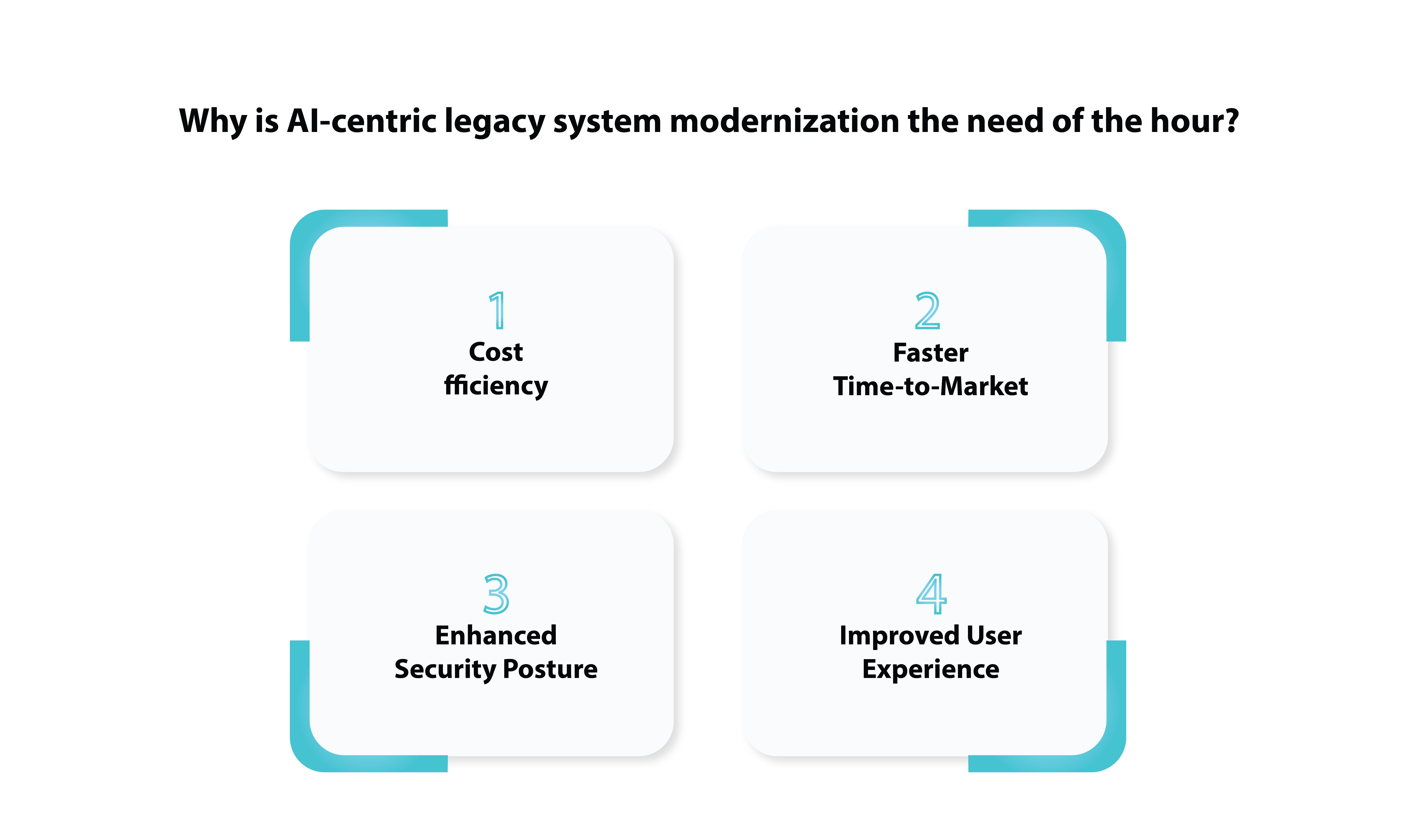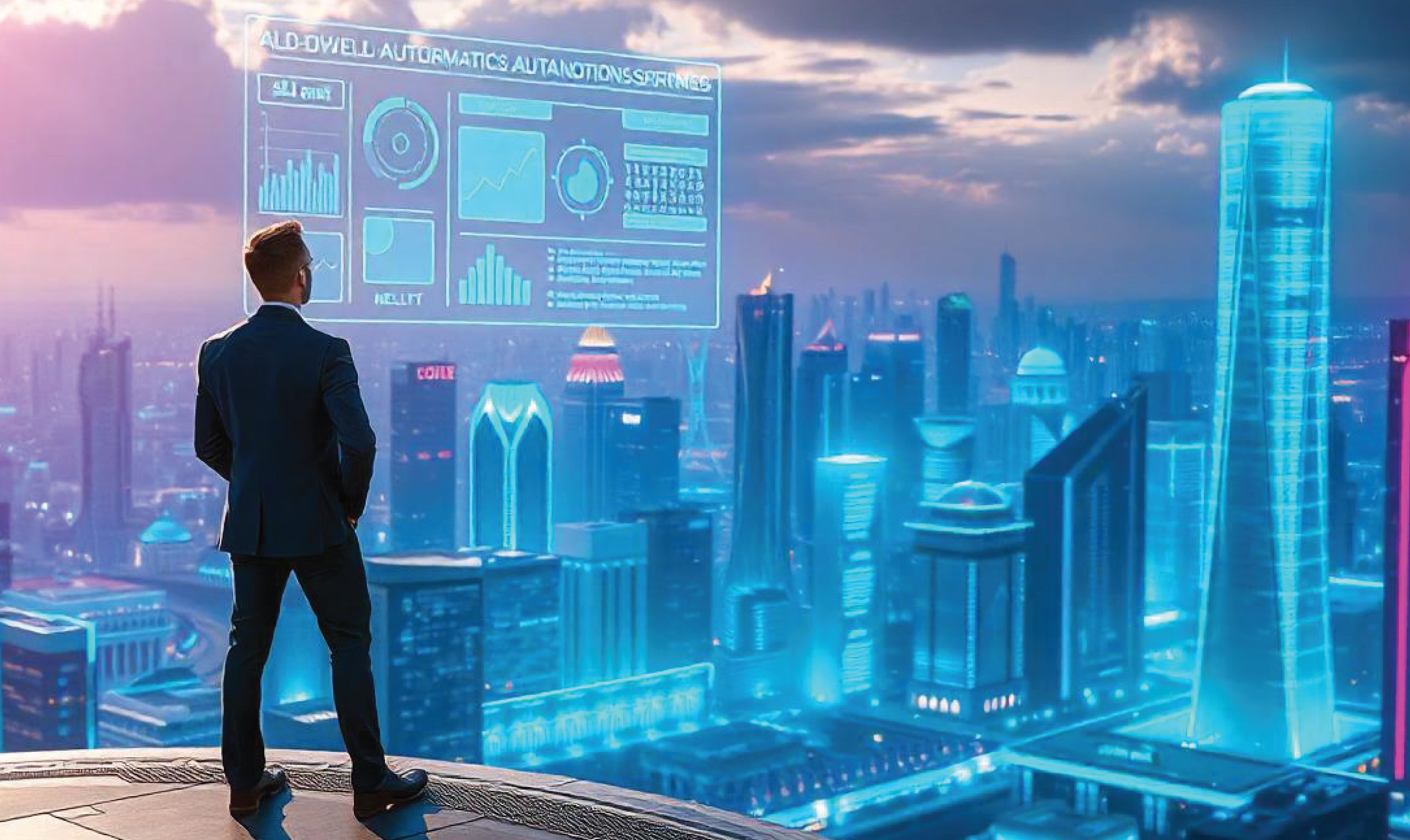Legacy systems are trusted soldiers of an organization, they have assisted the teams to achieve business goals. However, with time, they could not perform to their 100%, and newer technologies are always emerging. If you are still using legacy systems, you are putting your organization behind your competitors.
Using outdated systems will stifle growth, and create blind spots of security, and strategic implications. Legacy modernization is a strategic move, and we at Chirpn understand it perfectly. Being an AI-first company, we employ AI-driven methodologies to strategically upgrade operations; both internally, and for our clients.
Why organizations should modernize their legacy systems?
Legacy systems are outdated, mostly because they use age-old programming languages or monolithic architecture. According to experts, these systems cannot be integrated with newer, modern versions.
Why you should say bye to these?
- Your organization’s expenditure will be sky-high, as you have to hire people who know the legacy tech. Otherwise, you might have to deal with frequent outages and system failures! This can hinder agility, innovation, research and development, and other wings within an organization.
- According to our experts, agile businesses and stuck legacy systems don’t go well. Businesses should adapt, and, modern technology like AI SDLC is the key to unlocking that.
- These systems are more vulnerable than AI-assisted systems because they lack better encryption systems and security protocols.
- Integrating it with modern technologies will be a hassle, you will face data silos and inefficiencies.
How do we approach AI-powered legacy system modernization?
At Chirpn, our approach to modernizing legacy systems is grounded in leveraging AI technologies. We have devised a framework to create a transition for our clients, moving from outdated techniques to today’s modern agile, AI-led systems.
Performing a comprehensive assessment
The first question that we need to address is before proceeding to modernize legacy systems:
- How is the performance of the legacy system?
- What are the bottlenecks and areas of concern?
- Are there any compliance gaps or vulnerabilities?
- What are the requirements of the stakeholders?
How do we use AI in this stage?
AI can help us in the data collection and analysis, identifying areas we might have overlooked. The insights collected here are used during the initial decision-making process, which involves examining code databases and unstructured data.
Planning a Legacy Modernization Approach
After going through the findings, we move on to the next step, i.e., creating a blueprint for the migration. From here on, we can focus on either of these legacy system modernization approaches:
- Cloud migration, or moving the legacy system to the cloud, without changing anything, also known as rehosting
- Improving code through refactoring, to preserve the core functionalities and improve code performance
- Ditching the old system, and rebuilding a system from scratch but also maintaining essential features
Our AI-driven legacy system modernization services are necessary to understand potential risks, costs, and the due timeline. This information assists our clients in aligning their short-term and long-term goals with our approach.
Applying automation to transform code
Code automation and modernization are primary concepts of using AI for legacy system modernization. Using generative AI LLMs, we can understand the current codebase, and refactor them as per the requirements for modern businesses. AI can suggest improvements against old code patterns, translate old programming logic into new ones, and automate the document generation processes. This can reduce manual effort from the team, and subsequent human errors.
Not missing on quality assurance benchmark
Testing legacy systems is another hard nut to crack, you can suffer due to time-consuming and oversight. However, using AI-driven testing systems, we can streamline automated test case generation, predictive analytics, and continuous integration/ deployment (CI/ CD). With AI, we can ensure code coverage and bug detection, to prevent them from affecting the workflow in the future. We can also use AI to automate testing and deployment modules, thus prompting the rapid launch of the MVP with minimal risks.
Intelligence-based data migration
Data migration is often one of the most challenging aspects of legacy modernization. Our approach utilizes AI technologies to simplify this process:
Data Mapping Automation
AI tools can automatically map data from legacy databases to modern structures, ensuring compatibility and integrity throughout migration.
Anomaly Detection
Machine learning algorithms monitor data flows during migration to detect anomalies or inconsistencies in real time, allowing for immediate corrective actions.
By streamlining data migration efforts, organizations can minimize downtime and ensure that critical information is preserved during transitions.
Real-Time Monitoring and Predictive Maintenance
Once the modernized system is deployed, ongoing monitoring becomes essential for maintaining performance and security. AI technologies enable real-time monitoring of system health:
Anomaly Detection Systems
These systems use machine learning models to identify unusual patterns in system behavior that may indicate potential issues before they escalate into significant problems.
Predictive Maintenance Models
By analyzing historical performance data, AI can predict when maintenance will be required, reducing unexpected downtime and enhancing overall reliability.
This proactive approach not only improves operational efficiency but also extends the lifespan of modernized systems by ensuring they remain in optimal condition over time.
Why is AI-centric legacy system modernization the need of the hour?

The integration of AI into legacy system modernization offers numerous advantages:
Cost Efficiency
Automating tasks such as code refactoring and testing reduces labor costs associated with manual interventions while minimizing errors that could lead to costly fixes later on.
Faster Time-to-Market
Accelerated modernization timelines enable organizations to launch new features or services more quickly than traditional methods would allow.
Enhanced Security Posture
Continuous monitoring powered by AI helps identify vulnerabilities early on, enabling organizations to strengthen their defenses against cyber threats effectively.
Improved User Experience
Modernized systems equipped with intuitive interfaces enhance user interactions while reducing complexity for end-users.
Embracing a futuristic approach for legacy system modernization

How can businesses keep up with the pace of ever-evolving technology?
They can do so by embracing an AI-driven approach to legacy system modernization.
Without it, they cannot position themselves as a pioneer in the competitive marketplace. At Chirpn, our experts can assist businesses migrate from old technologies to newer versions, and navigating complex processes without any hassle.
As organizations look ahead toward digital transformation initiatives, investing in modernizing legacy systems will be crucial for unlocking new opportunities for growth and innovation. By partnering with Chirpn on this journey, businesses can ensure they are well equipped to thrive in an ever-evolving technological landscape.

